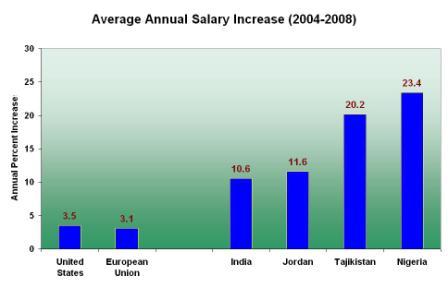 Author:
Author:
Chuck Csizmar – CMC Compensation Group
When designing programs to recognize and reward an employee’s extraordinary achievements it’s important to understand the cultural implications of these programs. Companies with a truly global operating mindset, vs. domestic-oriented organizations with international operations, will take into account national and cultural differences that distinguish its widespread employee populations.
One size rarely fits all.
You might think that the positive aspects of employee recognition programs are a universally accepted principle, but that’s only partially correct. Important differences exist. In some cultures / national identities the role of the team is such a core element of employee identification that seeking out an individual contributor for recognition would not be a welcome practice. Some employees might be reluctant to step forward, or to be pushed into the spotlight.
In other countries you will find that the perceived value of cash as a recognition award varies a great deal.
Case study
A former employer of mine once implemented a global Spot Award program for its worldwide employees – without including their international HR community in the planning discussions. Finalized program elements and procedures covered employees in over 20 countries in exactly the same fashion. The premise was to provide immediate (read that, fast) recognition and financial rewards (Spot Awards) for those employees who demonstrated performance above and beyond their normal job roles. Nominations for awards would come from an employee’s manager, though employees could recommend co-workers as well.
While the program was deemed a success in the US (though defined by only the dollars spent), it was much less successful elsewhere among the company’s far-flung international operations.
Lessons Learned
The first problem was that Managers outside the US placed a much more conservative financial value on so-called “extraordinary” employee contributions. Or put another way, the US Managers were more generous in their payment awards than elsewhere. The result was that the cash payments on a per-employee basis were widely skewed to the US employee. Notwithstanding the vagaries of the various currency exchanges, the international offices did not spend their allotted recognition reward monies as frequently or as generously as their US counterparts.
I recall one scenario where a US employee received thousands of dollars for a particular project effort, while their European counterpart was given a non-cash award (recognition dinner). This created more than a few awkward moments when the two employees shared experiences.
The second challenge was that many international employees did not want to be individually spotlighted by the recognition program. They were willing to receive the award, but would rather the recognition be confidential. Given that Corporate had planned an internal communications campaign to highlight individual award winners, that reluctance proved quite a hindrance.
Compounding the preference for anonymity was the desire for team over personal awards, as individual employees proved resistant to receiving the planned fanfare or preferential treatment – especially in front of their co-workers (team members).
The bottom line was that the recognition and reward program recognized a smaller than anticipated number of non-US employees, less reward money was spent per international employee, and Corporate Communications was hard pressed to find international employees amenable to being highlighted for the program. Not exactly what the program designers had intended.
Corrective action
The answer seems straightforward, does it not? If a global program is to affect all employees, then possible national or cultural distinctions among groups should be addressed, well in advance. However, that would mean including representatives from those groups in the design and communication phases of the project. Such a simple step seems a difficult one to take for many corporate plan designers. Why?
When they have the bit between their teeth developing a program that affects the majority of employees, management is often reluctant to change course to include the differing sensitivities of small populations, especially if those populations do not speak with one voice. What they prefer to do is have local representatives “tweak” the round peg into the square hole.
How does that work for you?
More About Chuck:




 Author:
Author:
 Author:
Author:
 Author:
Author:



You must be logged in to post a comment.